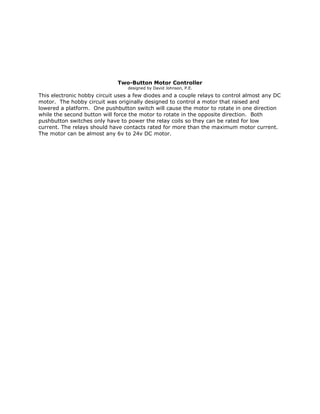Two button motor controller
- 1. Two-Button Motor Controller designed by David Johnson, P.E. This electronic hobby circuit uses a few diodes and a couple relays to control almost any DC motor. The hobby circuit was originally designed to control a motor that raised and lowered a platform. One pushbutton switch will cause the motor to rotate in one direction while the second button will force the motor to rotate in the opposite direction. Both pushbutton switches only have to power the relay coils so they can be rated for low current. The relays should have contacts rated for more than the maximum motor current. The motor can be almost any 6v to 24v DC motor.

